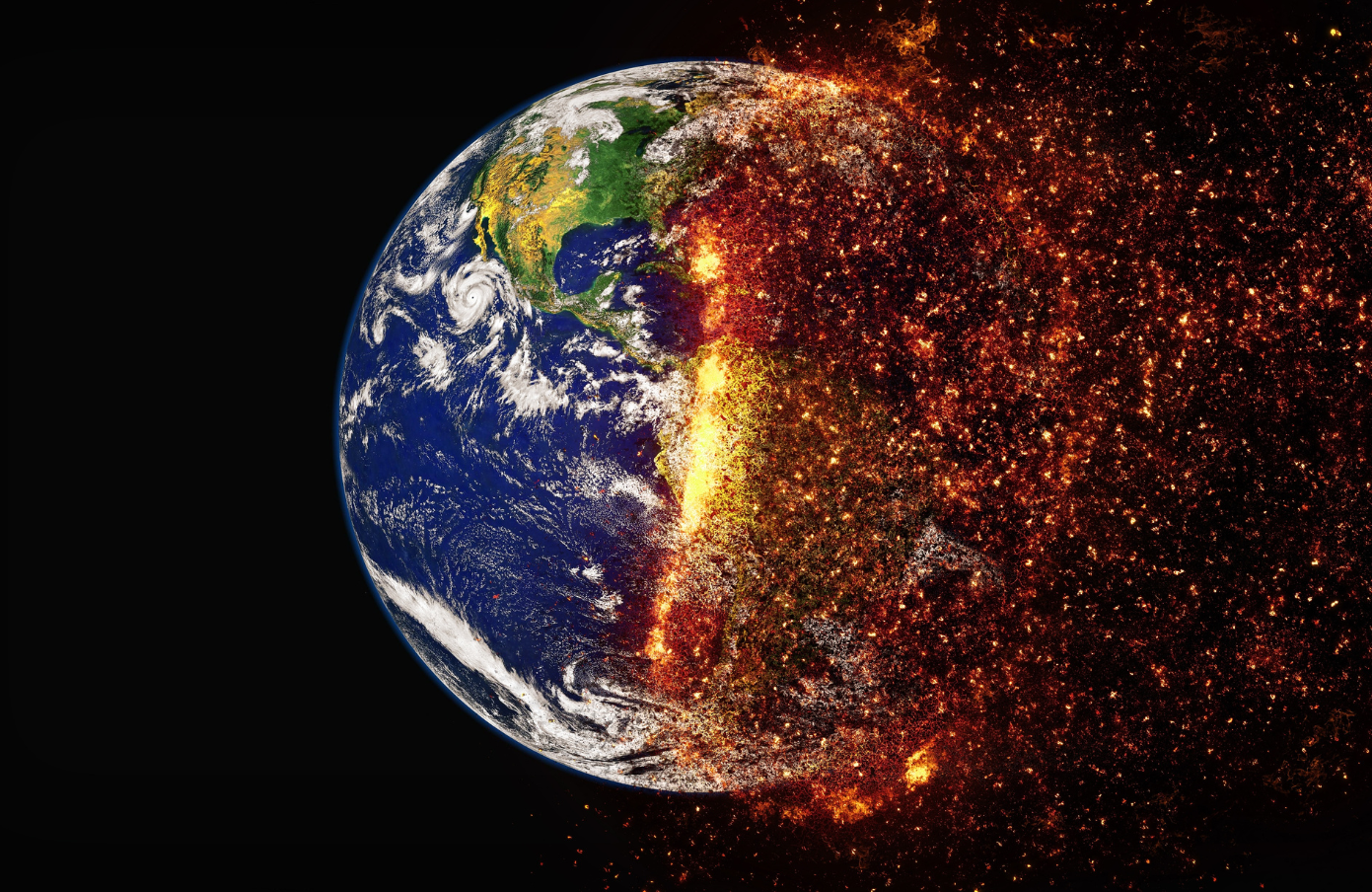COP26 is the twenty-sixth conference of the 196 Parties to the UN Framework Convention on Climate Change of 1992 (see this previous blog post by Michael Rhimes on the international law framework and background to the conference).
Before the conference began, many anticipated that COP26 would be a particularly significant climate event, perhaps the most significant since the adoption of the Paris Agreement in 2015. This conference is the first time that parties will submit their five-year nationally determined contributions (“NDCs”) under the Paris Agreement, and the US has returned to the fold after its brief withdrawal from the Agreement. The conference also comes at a time when world leaders and populations are increasingly cognisant of the pressing need to take action if we are to meet the Paris temperature goals, and in the wake of UN Secretary General António Guterres’s warning of a “code red” for humanity following the Intergovernmental Panel on Climate Change’s (“IPCC”) Sixth Assessment Report (“AR6”). More than 120 world leaders have been in Glasgow for the 2-week summit. Notably absent from the conference are leaders such as Brazil’s Jair Bolsonaro, Saudi Arabia’s Mohammed bin Salman, and China’s Xi Jinping.
The Prime Minister, Boris Johnson, emphasised the importance of the conference in his address at the opening ceremony:
“Humanity has long since run down the clock on climate change. It’s one minute to midnight on that doomsday clock and we need to act now.”
The Prime Minister of Barbados, Mia Mottley, also delivered a powerful speech at the ceremony in which she urged leaders to “try harder”, and emphasised the devastating impact that temperature rises would have for small developing island nations. Prime Minister Mottley said:
"Our world stands at a fork in the road no less significant than when the United Nations was formed in 1945, but then the majority of our countries here did not exist. We exist now, the difference is we want to exist 100 years from now and if our existence is to mean anything, we must act in the interest of all our people."
The first week of the conference is now complete, countries have submitted their NDCs, and important commitments have been made on forests, energy and fossil fuels, and methane. These will be discussed below.
Deforestation
The first major deal to come out of the summit concerned deforestation. Over 100 leaders, including those of Brazil, China and Indonesia, committed to conserving forests and other territorial ecosystems and accelerating their restoration. The signatories to the Glasgow Declaration together cover around 85% of the world’s forests. £14bn of public and private funds were pledged to achieve this goal.
While this is welcome, focus now clearly needs to shift to delivery. The previous 2014 New York Declaration on Forests (“NYDF”) also included goals such as halting natural forest loss by 2030, and restoring 350 million hectares of degraded landscapes and forests. It had over 200 endorsers which included over 40 national governments as well as sub-national governments, multi-national companies, Indigenous peoples, financial institutions and NGOs. In 7 years of tracking progress, the NYDF Assessment has consistently found that the world is not on track to meet the 2030 target, and that forest loss has gone up rather than down.
Whether the Glasgow Declaration will fare better will depend on whether signatories are serious about delivering on its commitments. Less than promising was the statement made by Indonesia’s Environment Minister, Siti Nurbaya Bakar, just days after the country had signed the declaration, in which she said that Indonesian authorities could not “promise what we can’t do” and that forcing Indonesia to commit to ending deforestation by 2030 was “clearly inappropriate and unfair”.
Methane
Another key moment in the first week of the conference related to methane. In September, the US and the EU had announced the Global Methane Pledge, a joint initiative to reduce global methane emissions by at least 30% from 2020 levels by 2030. Since the beginning of the conference over 100 countries representing 70% of the global economy, have now formally committed to the pledge. Notably absent are some of the world’s largest methane emitters such as China, Russia and Australia.
This is, nonetheless, an important step. Ursula von der Leyen, introducing the pledge, described cutting methane emissions as “one of the most effective things we can do to reduce near-term global warming and keep 1.5 degrees Celsius. It is the lowest-hanging fruit.” Methane is an incredibly potent greenhouse gas when it comes to global warming, estimated to be far more potent at warming than carbon. Estimates given by the US and the EU when announcing the pledge suggested that delivering on the pledge would reduce warming by at least 0.2oC by 2050.
Fossil Fuels
On 4 November, referred to as ‘Energy Day’, important decisions were taken in respect of coal and fossil fuels. At least 23 countries made new commitments to phase out coal power, including five of the world’s top-20 coal power-using countries. In a ‘Global Coal to Clean Power Transition Statement’, numerous countries and organisations also committed to working to make clean power the most affordable and accessible option globally, and to ceasing the issuance of new permits for new unabated coal fired power generation projects.
The UK, the US and 25 other signatories also agreed to stop new direct public financing for coal, oil and gas development by the end of 2022, save in limited and clearly defined circumstances, and to prioritise support towards the clean energy transition. Collectively, this could shift an estimated $17.8bn annually in public support out of fossil fuels and into the clean energy transition. Notably absent from the agreement are major fossil fuel producers and financers such as China and Nigeria, and institutions such as the World Bank.
The 1.5oC target: still within reach?
The purpose of the conference is to monitor progress and plan to reduce dangerous anthropogenic interference with the climate system. Key to achieving this are the targets set out in Article 2 of the Paris Agreement, to hold the increase in the global average temperature to “well below 2oC” above pre-industrial levels, and to pursue efforts to limit it further to only 1.5oC above pre-industrial levels. Before the conference, the IPCC estimated in the AR6 that warming of 1.5oC and 2oC would be exceeded during the 21st century unless deep reductions in carbon dioxide and other greenhouse gas emissions occur in the coming decades. So how far will the NDCs submitted and pledges made in Glasgow go to achieving these goals?
The evidence emerging from the scientific community is somewhat concerning.
UN Climate Change on 17 September 2021 published a synthesis report to the effect that the NDCs that had been submitted by that point would still lead to a sizable increase in global greenhouse gas emissions by 2030 compared to 2010 of around 16%. According to the report, to limit global warming to 1.5oC by 2100, global net anthropogenic CO2 emissions would need to decline by about 45% from the 2010 level by 2030, or 25% in order to reach 2oC warming.
A similarly pessimistic view was taken by the UN Environment programme in its Emissions Gap Report published on 26 October 2021, which estimated that the updated NDCs and announced pledges for 2030 would still lead to warming of 2.7oC.
In mid-October, also before the conference began, the International Energy Agency (“IEA”) published its World Energy Outlook (“WEO”), also taking into account the pledges that had been made in the run up to COP26 by (at that point) over 50 countries. The WEO indicated that, while the pledges would start to bend the global emissions curve down, the direction of travel was still a long way off the roadmap to 1.5oC stabilisation scenario that it had previously set out in May 2021. The IEA estimated temperature rises of around 2.1oC by 2100, and noted that the pledges made covered less than 20% of the gap in emissions reductions that needs to be closed by 2030 to keep a 1.5oC path within reach.
Since the conference began, there has been a more promising update by the Executive Director of the IEA, who on 4 November published a statement to the effect that, taking into account the pledges that had been made since the publication of the WEO, the rise in global temperatures by 2100 would be at around 1.8oC. Whether this would amount to the “well below 2oC” target required by Paris is unclear, but it demonstrates that the commitments made by parties at COP26 are steps in the right direction which will have tangible impacts when it comes to slowing temperature rises.
Outside the Conference: Climate Activism
Reactions to the progress made during the first week of the conference have been mixed. Climate activists across the world have been less than optimistic. On Saturday 6 November, more than 300 marches and rallies occurred on almost every continent as part of a ‘Global Day for Climate Justice’. Addressing a rally in Glasgow, Greta Thunberg proclaimed that “COP26 is a failure”, stating that immediate and drastic emissions cuts were needed, and criticising world leaders for continuing to “live in their bubble filled with their fantasies, like eternal growth on a finite planet and technological solutions that will suddenly appear seemingly out of nowhere and will erase all of these crises just like that”. Particular ire was drawn by reports suggesting that, on Friday, the Prime Minister had flown to London from Glasgow on a private jet to attend a dinner at the Garrick. This in turn followed the publication of a government report revealing that 22 Whitehall departments and government agencies had taken 106,824 internal flights in the year to 31 March 2020, an average of 293 flights per day.
As a result of the disillusionment that some activists have felt at COP26, the COP26 Coalition – a UK-based coalition of groups and individuals mobilising around climate justice during the conference – have been running a People’s Summit for Climate Justice from 7-10 November, with a stated ambition to “[bring] together movements from across the world to build power for system change”, including indigenous movements, frontline communities, trade unions, NGOs and grassroots community campaigns.
Conclusions
The conference is still underway, and various important commitments have been made by world leaders already. Reports and updates from the IEA in particular do provide hope that tangible and potentially significant steps are being taken to reduce emissions, and to move global temperature increases in the right direction.
Clearly there is much more that needs to be achieved, however, if the 1.5oC by 2100 aspiration is to be met. Certain nations have been notable in their absence from the list of signatories to the various pledges and declarations signed in the first week.
In week 2, the conference will negotiate on further important aspects of the drive towards emissions reductions, including adaptation, science and innovation and transport. An update on further progress made during the second week will be published on this blog in due course.
Flora Curtis is a barrister at Francis Taylor Building specialising in environmental, public and planning law.








